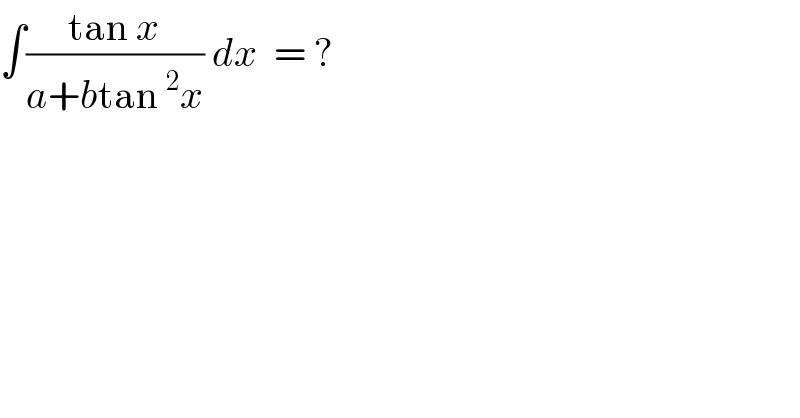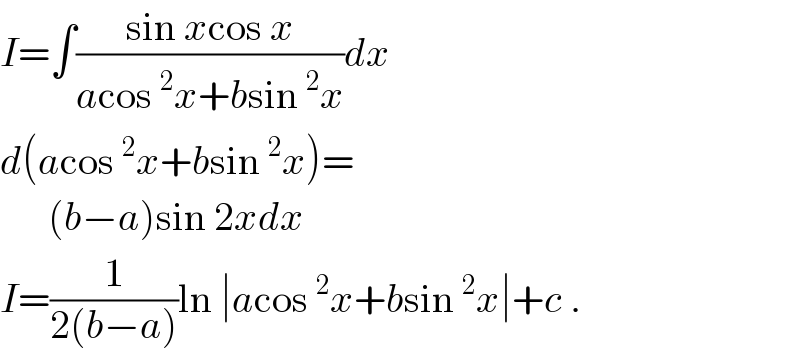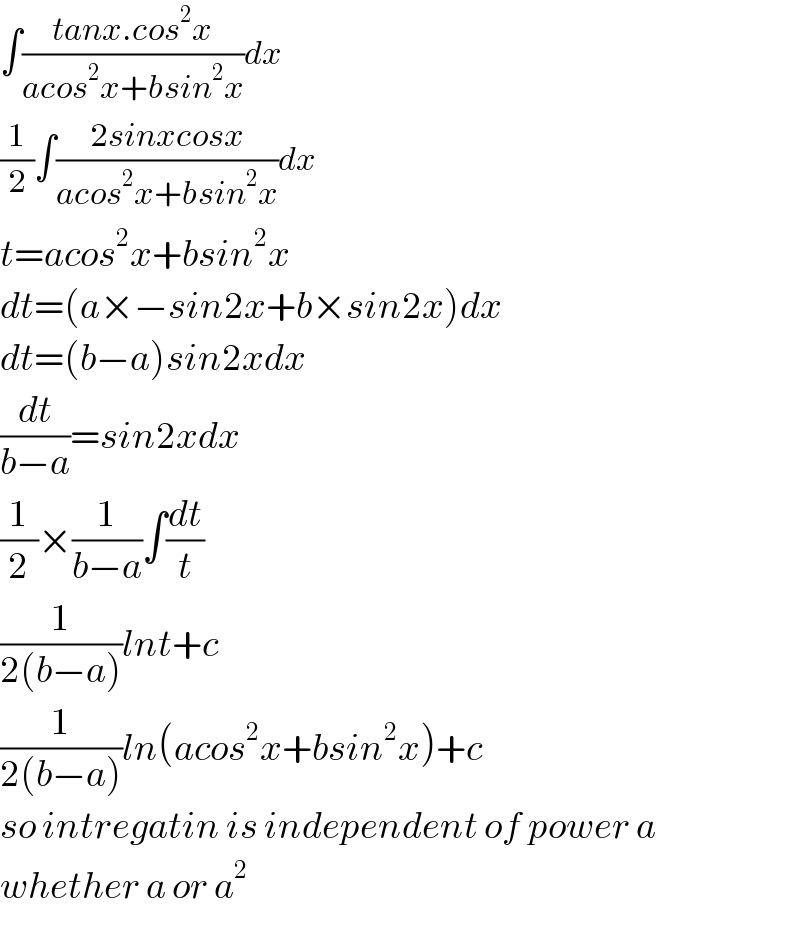
Question and Answers Forum
Question Number 38058 by ajfour last updated on 21/Jun/18

Answered by behi83417@gmail.com last updated on 21/Jun/18
![tg^2 x=(a/b)t⇒2tgx(1+tg^2 x)dx=(a/b)dt 2tgxdx=(((a/b)dt)/(1+(a/b)t))⇒tgxdx=((adt)/(2(b+at))) I=∫(((adt)/(2(b+at)))/(a+at))=(1/2)∫(dt/((1+t)(b+at)))= (1/(2(b−a)))∫[(1/(1+t))−(a/(b+at))]dt= =(1/(2(b−a)))[ln(1+t)−ln(b+at)+const]= =(1/(2(b−a)))[ln(1+(b/a)tg^2 x)−ln(b+btg^2 x)+c]= =(1/(2(b−a)))ln(a.cos^2 x+b.sin^2 x)+const. ■ (1/((1+t)(b+at)))=(A/(1+t))+(B/(b+at)) t=−1⇒(1/(b−a))=A,t=0⇒B=1−(b/(b−a))=(a/(a−b))](Q38064.png)
Commented by ajfour last updated on 21/Jun/18

Answered by ajfour last updated on 21/Jun/18

Commented by tanmay.chaudhury50@gmail.com last updated on 21/Jun/18

Answered by tanmay.chaudhury50@gmail.com last updated on 21/Jun/18

